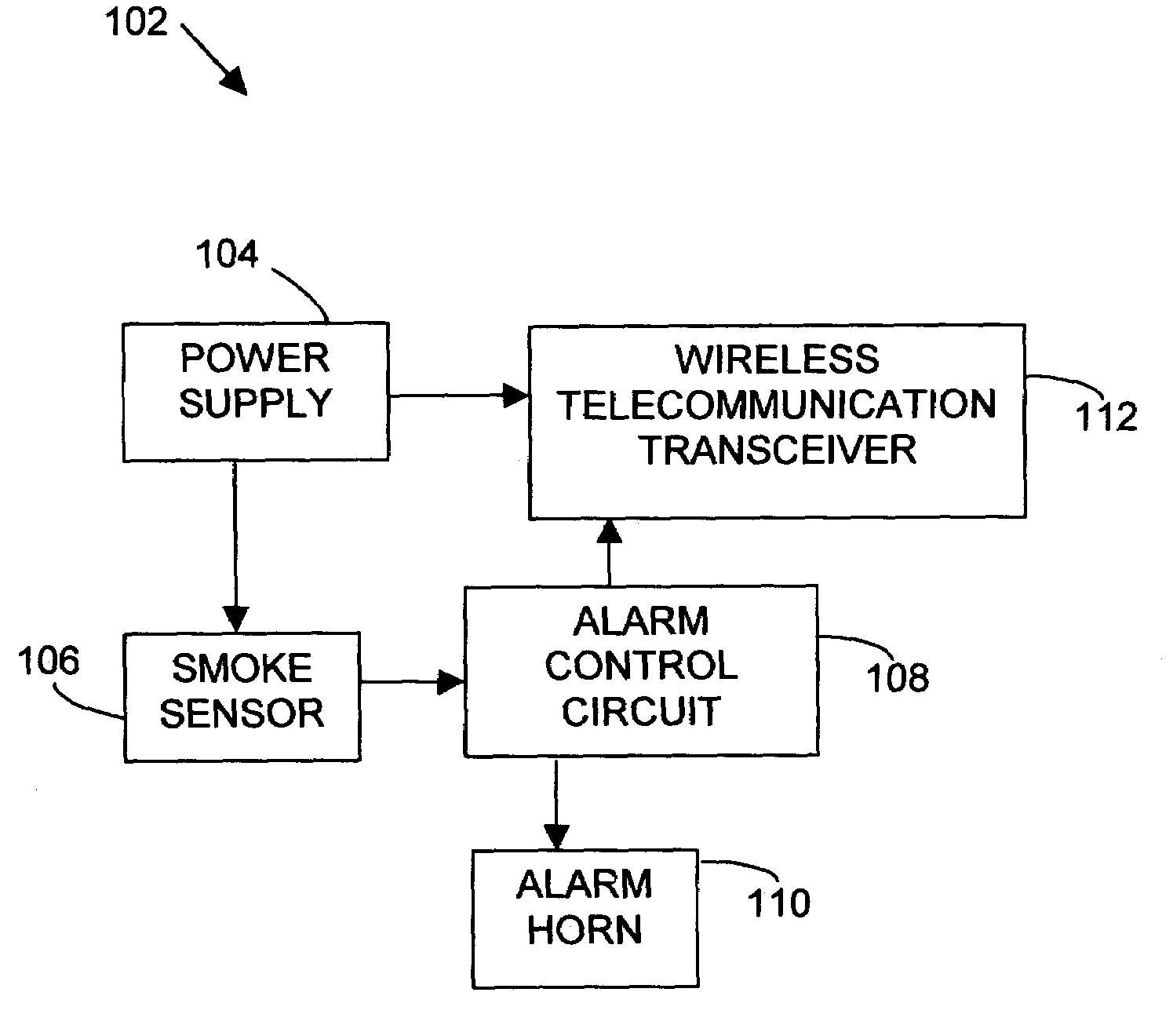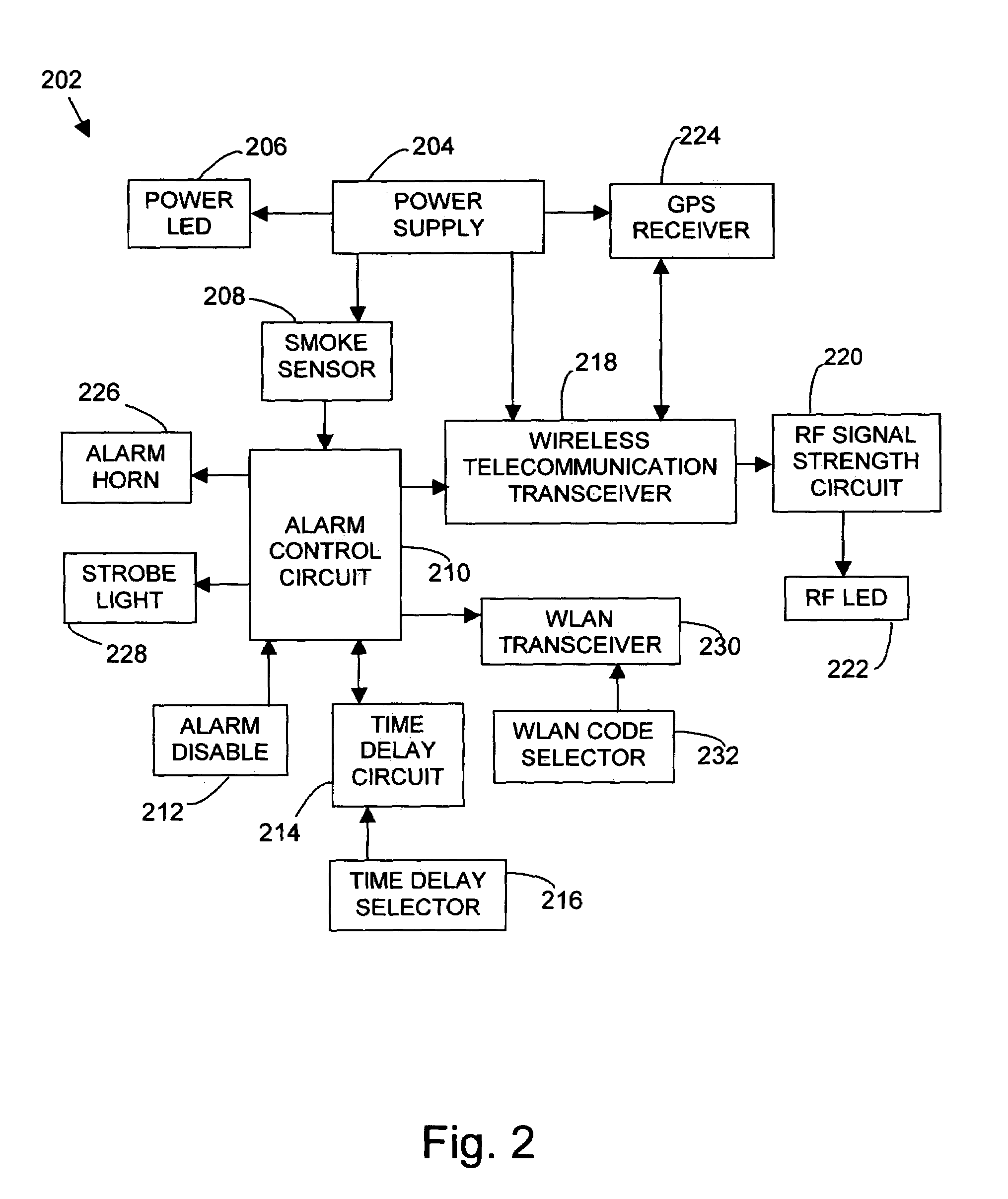Combination smoke alarm and wireless location device
a wireless location and smoke alarm technology, applied in fire alarms, fire alarm smoke/gas actuation, signalling systems, etc., can solve the problems of increased fire danger, intoxication, sleeping occupants may not hear or otherwise respond, and units cannot communicate with each other, so as to achieve quick, efficient and cost-effective detection
- Summary
- Abstract
- Description
- Claims
- Application Information
AI Technical Summary
Benefits of technology
Problems solved by technology
Method used
Image
Examples
Embodiment Construction
[0047]In the following description, certain specific details are set forth in order to provide a thorough understanding of various embodiments. However, one skilled in the art will understand that the embodiments may be practiced without these details. In other instances, well-known structures associated with smoke alarms and wireless networks have not been shown or described in detail to avoid unnecessarily obscuring descriptions of the embodiments.
[0048]Unless the context requires otherwise, throughout the specification and claims which follow, the word “comprise” and variations thereof, such as, “comprises” and “comprising” are to be construed in an open, inclusive sense, that is as “including, but not limited to.”
[0049]The headings provided herein are for convenience only and do not interpret the scope or meaning of the claimed invention.
[0050]One embodiment of the wireless smoke alarm is shown as a unit 102 in FIG. 1. The unit 102 can be fixed-mounted to a wall, ceiling, or oth...
PUM
 Login to View More
Login to View More Abstract
Description
Claims
Application Information
 Login to View More
Login to View More - R&D
- Intellectual Property
- Life Sciences
- Materials
- Tech Scout
- Unparalleled Data Quality
- Higher Quality Content
- 60% Fewer Hallucinations
Browse by: Latest US Patents, China's latest patents, Technical Efficacy Thesaurus, Application Domain, Technology Topic, Popular Technical Reports.
© 2025 PatSnap. All rights reserved.Legal|Privacy policy|Modern Slavery Act Transparency Statement|Sitemap|About US| Contact US: help@patsnap.com



